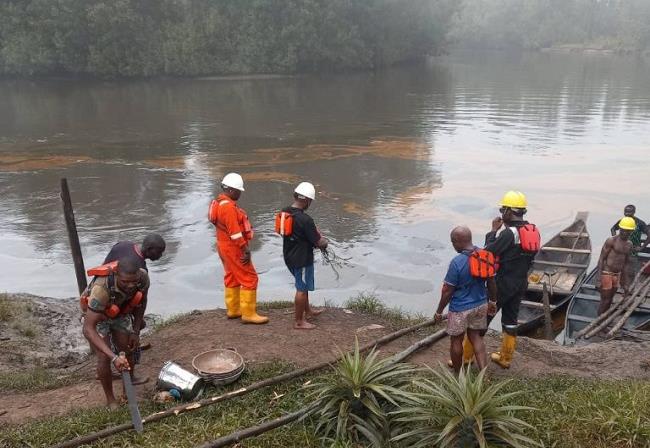The regulatory agencies investigating the Nov. 5 oil spill at Oil Mining Lease (OML) 29 at Nembe in Bayelsa State on Thursday, December 23, 2021, attributed the spillage to sabotage.

The accident polluted the Santa Barbra River and Nembe Creeks.
The Joint Investigative Visit (JIV) to ascertain the cause, volume and impacted areas resumed on Wednesday following a visit by the Minister of State for Environment, Mrs Sharon Ikeazor.
The JIV is a statutory probe that follows every reported leak incident.
The JIV is usually convened by the operator of the leak facility and it comprises representatives of the oil firm, affected communities, regulators and state ministry of environment.
Representatives of the National Oil Spills Detection and Response Agency (NOSDRA) and the Nigerian Upstream Petroleum Regulatory Commission (NUPRC) told newsmen after the visit that they traced the leak to sabotage.
Mr Ismail Baba-Ahmed, NOSDRA’s representative on JIV, said based on his experience in fluid mechanics and interactions with well head experts who plugged the leak, only vandalism could have caused the spill.
He said the threading on the well head casing from where the valve was removed was not worn out, a development that suggests that the leak was not caused by pressure.
Mr Adetoyibo Adeyemi, of NUPRC agreed with NOSDRA that physical examination of the failed well head indicated that the pressure from the oil well was not sufficient enough to blow it.
Mr Enai Reuben, Head of Pollution Control, Bayelsa State Ministry of Environment, however told newsmen that the inspection was inconclusive because the JIV team could not see the exact point of the leak.
Therefore, Reuben said, it would be inaccurate to draw conclusion on the cause of the spill.
“It will be inaccurate to draw conclusion without seeing the leak point. In an investigation it is called evidence-based conclusion”, he said.
He wondered why the well head could not be preserved for evaluation after the leak was stopped.
The leak, which was reported on Nov. 5, was plugged on Dec. 8, while 16,280 barrels of crude and crude sediments were recovered from the incident site.
By Nathan Nwakamma
